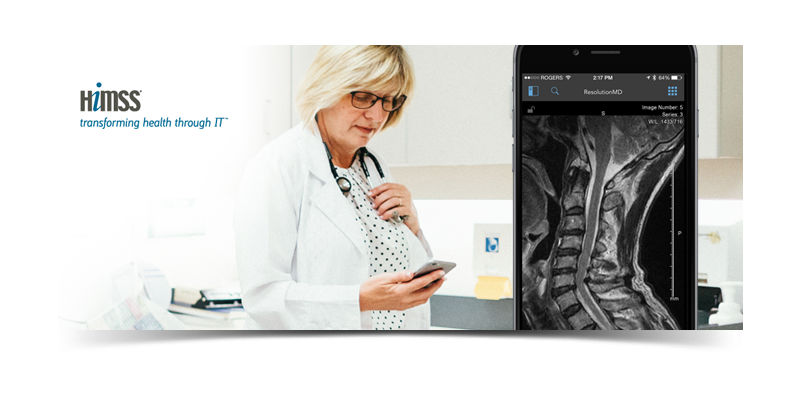
(Credit: Calgary Scientific)
This year’s HIMSS was another massive event, leaving no doubt about the critical role that health IT continues to have in all aspects of healthcare. The 2016 show had 42,000 attendees and 1200 exhibitors; it was virtually almost impossible to get around the entire exhibit floor, not to mention the conference panels and education sessions. Rising above the noise were strong themes of interoperability and the increasing presence of the cloud, both of which shifted from topics of discussion to product demonstrations and implementation showcases.
Image Management Paves the Way for Digital Content Management
Electronic health record (EHR) companies, VNA and PACs vendors and others invested in imaging technology were showing tools for managing both enterprise images and content. For years, we have been highlighting the need to access and share images across enterprises using zero footprint viewers, collaboration tools and image exchange technologies. Discussions on content management went deeper into all imaging formats, not just DICOM, and providing the clinical tools to handle all the “ologies,” such as oncology, pathology, dermatology, ophthalmology and endoscopy, among others.
This shift to strategies that support federation of a provider’s entire scope of “digital content” reflects a more sophisticated understanding of the needs and requirements of collaboration and point of care coordination. It also underscores the role of the EHR as the point of access and that must interoperate on all levels with the enterprise imaging solution, provide premium enterprise content management, diagnostic accreditation and complete the patient context.
The Cloud: More Present Than Ever
The cloud’s role in healthcare has reached new levels of acceptance, especially for enterprise imaging platforms and those that are tightly integrated with the EHR. Offsite managed services messaging is changing from archiving to clinical access to digital content from anywhere using any browser and any device, while still offering diagnostic accreditation and protecting HIPAA compliance concerns. This provides a strong foundation for clinical collaboration between providers, counties, states and countries. Discussion of the cloud was more present than ever before at this year’s show as many providers moved on from their “never in the cloud” stance to including it in their set of commonly used technology strategies.
Many of our partners offer cloud-based image management services and they report back that the simplicity of their services and management appeals broadly to small clinics, with growing acceptance in larger facilities with the ultimate vision of fully integrated, patient-centric offering. These partners manage all aspects of image storage, access and transfer for customers at a monthly rate. In addition to supporting their basic image management needs, the consolidation of information also enables our partners to offer analytics services to providers enabling them to gain greater insight into both clinic operations and patient data.
Moving Toward a Platform for Image Management
The demand for interoperability and the enabling technology of the cloud point toward the emergence of image management platforms. The combination of platform-agnostic digital content viewers, whether stand-alone or integrated with, EHRs, and the “magic” of sharing content in the cloud promises the ease of access and information sharing that today’s providers need to improve care and lower costs.
This blog originally appeared on Calgary Scientific’s website.




